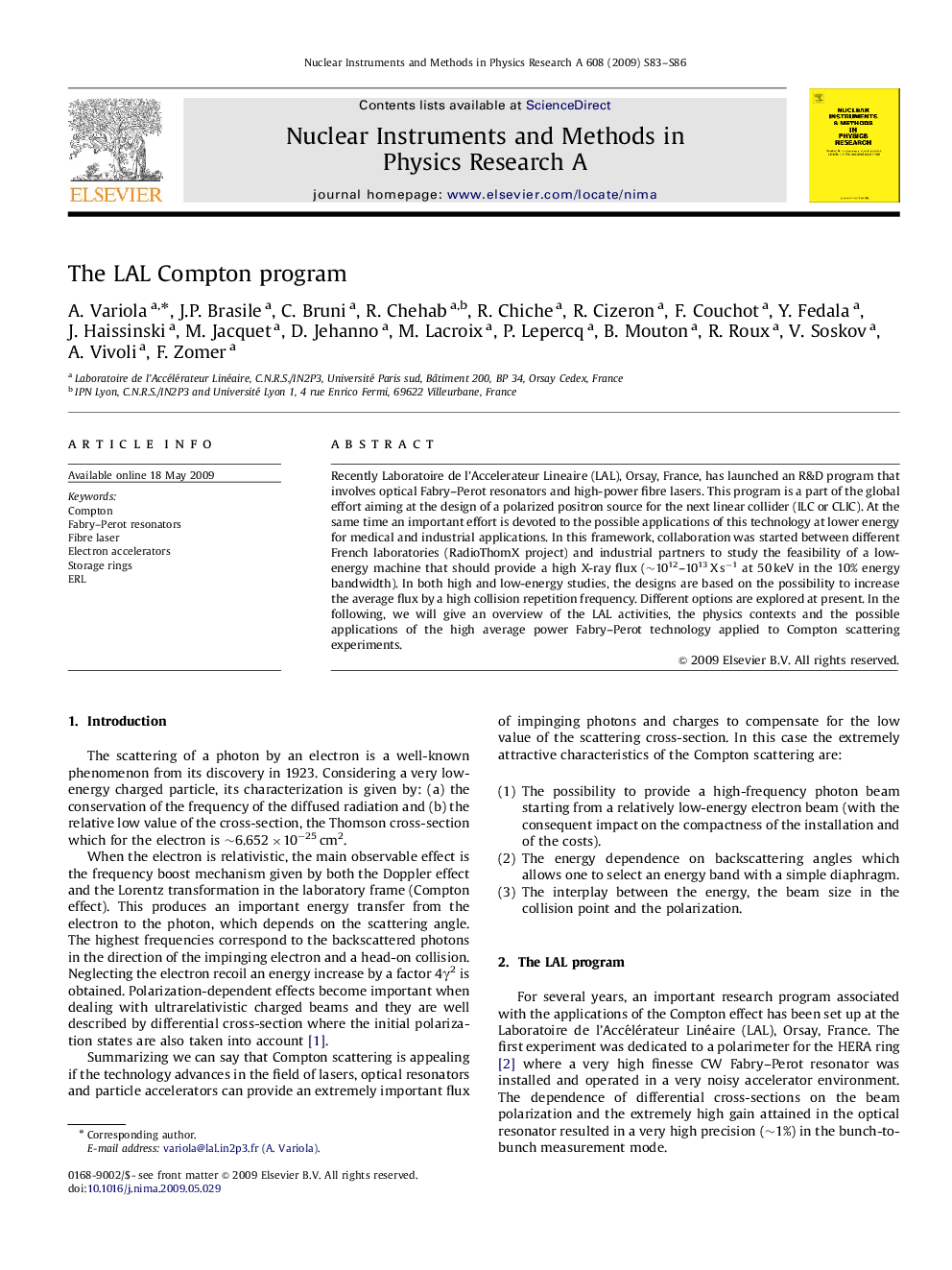| Article ID | Journal | Published Year | Pages | File Type |
|---|---|---|---|---|
| 1827738 | Nuclear Instruments and Methods in Physics Research Section A: Accelerators, Spectrometers, Detectors and Associated Equipment | 2009 | 4 Pages |
Abstract
Recently Laboratoire de l'Accelerateur Lineaire (LAL), Orsay, France, has launched an R&D program that involves optical Fabry-Perot resonators and high-power fibre lasers. This program is a part of the global effort aiming at the design of a polarized positron source for the next linear collider (ILC or CLIC). At the same time an important effort is devoted to the possible applications of this technology at lower energy for medical and industrial applications. In this framework, collaboration was started between different French laboratories (RadioThomX project) and industrial partners to study the feasibility of a low-energy machine that should provide a high X-ray flux (â¼1012-1013Â XÂ sâ1 at 50Â keV in the 10% energy bandwidth). In both high and low-energy studies, the designs are based on the possibility to increase the average flux by a high collision repetition frequency. Different options are explored at present. In the following, we will give an overview of the LAL activities, the physics contexts and the possible applications of the high average power Fabry-Perot technology applied to Compton scattering experiments.
Related Topics
Physical Sciences and Engineering
Physics and Astronomy
Instrumentation
Authors
A. Variola, J.P. Brasile, C. Bruni, R. Chehab, R. Chiche, R. Cizeron, F. Couchot, Y. Fedala, J. Haissinski, M. Jacquet, D. Jehanno, M. Lacroix, P. Lepercq, B. Mouton, R. Roux, V. Soskov, A. Vivoli, F. Zomer,
